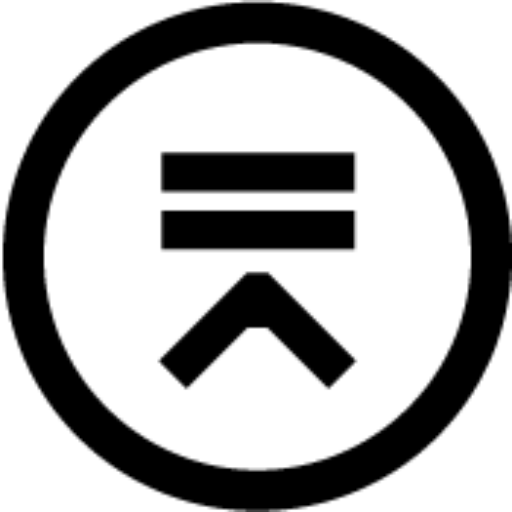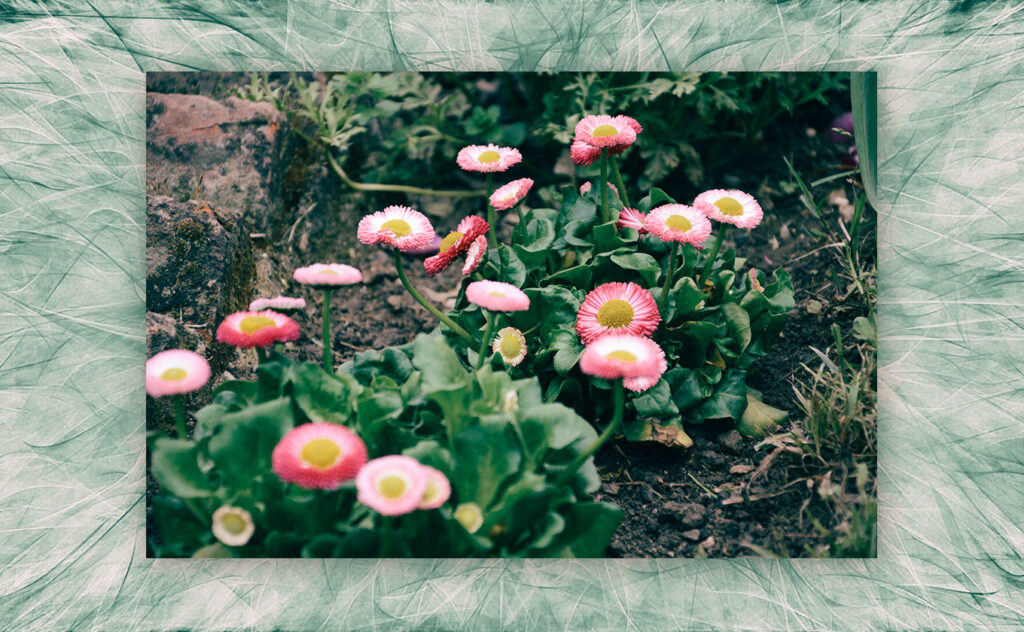Farfisa Rhythm 10
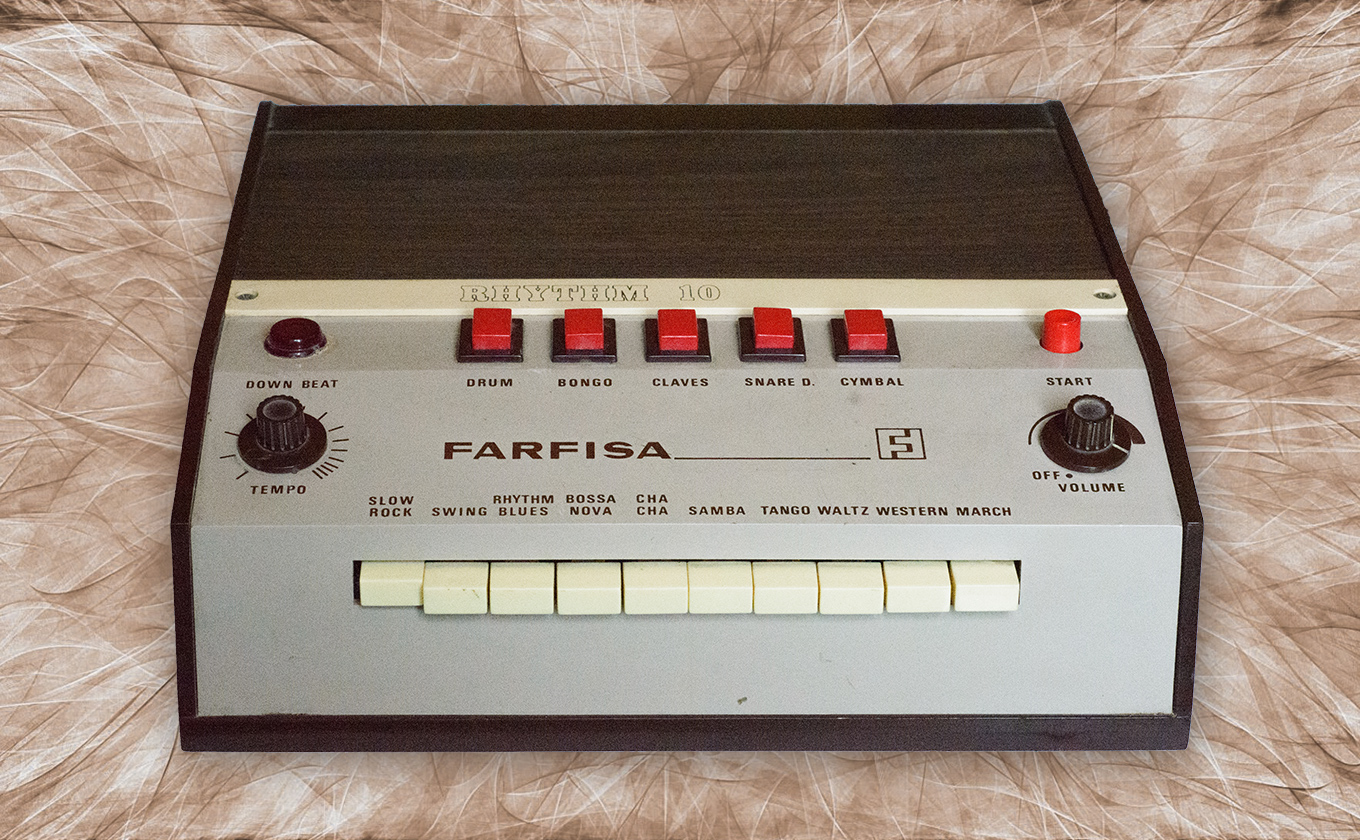
Farfisa Rhythm 10 is an analogue drum machine made in Italy in 1969. It has been used, among others, by Kraftwerk in Kling Klang and Tanzmusik. This lovely piece of hardware featured 10 patterns, variable tempo, and 5 pads (actually buttons) to let the musician play custom grooves and variations.
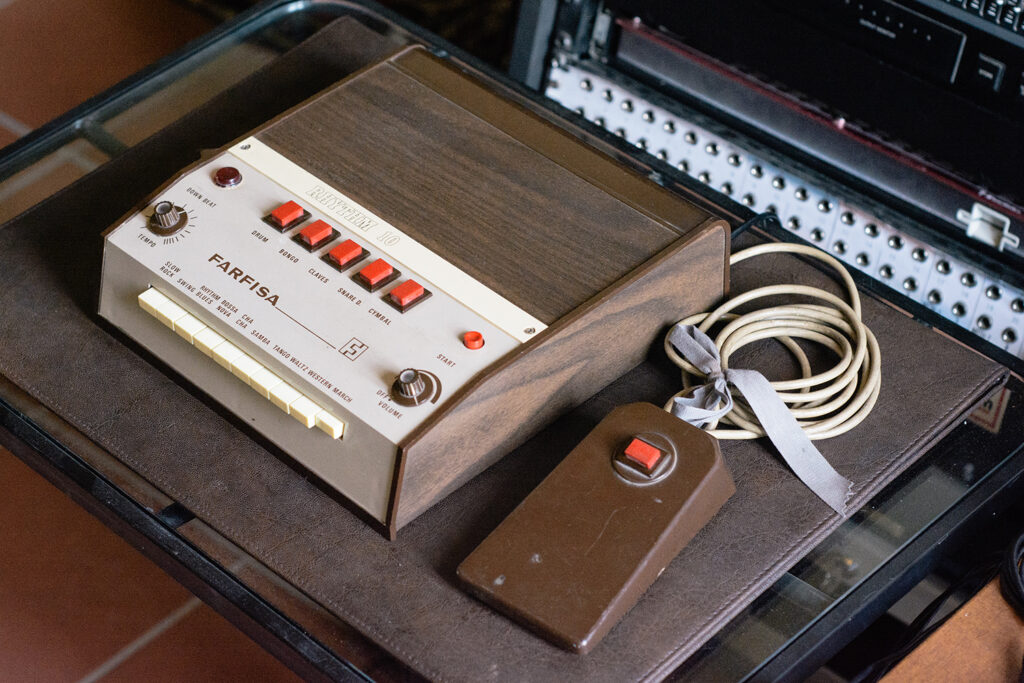
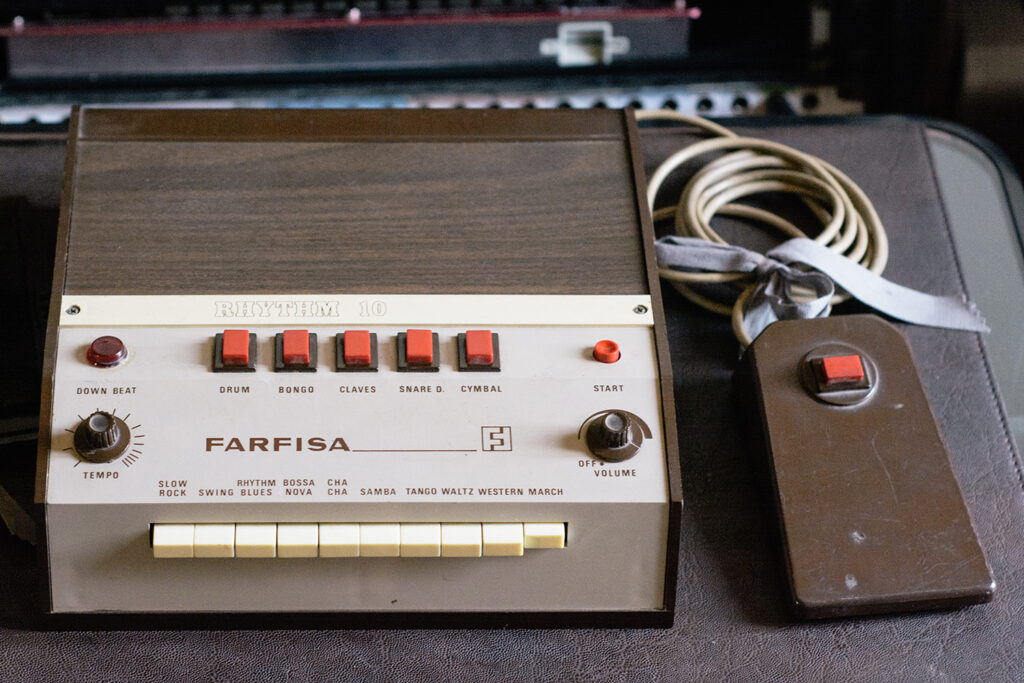
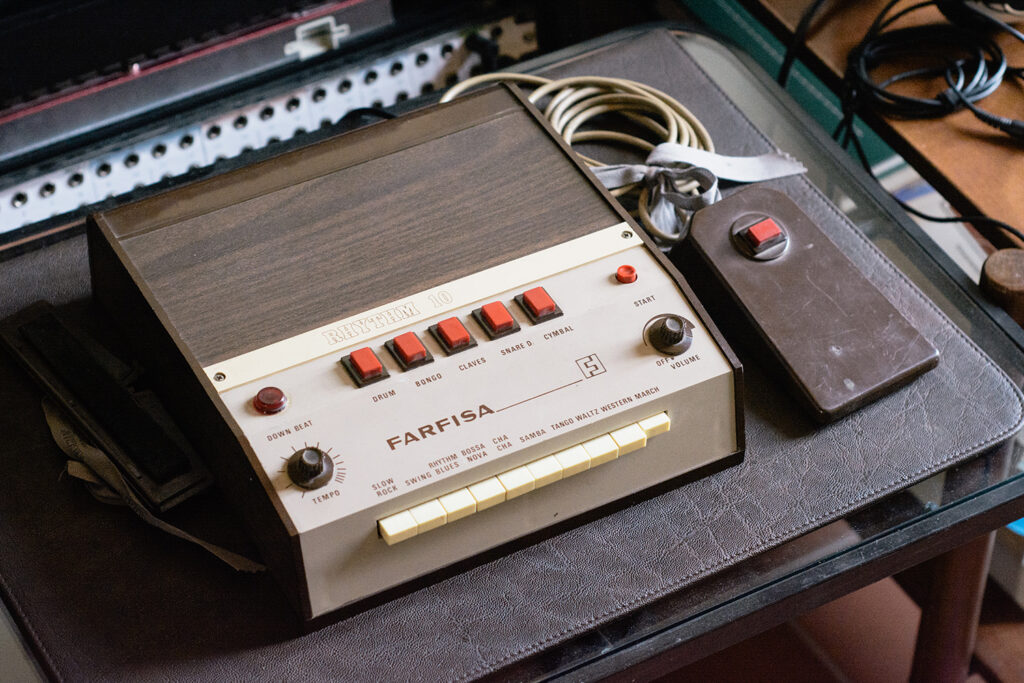
Some details and examples
It runs on 6 medium-sized batteries (but on the back, I see a hole that suggests also an external 9V power supply). It also features an auxiliary input with a level trim on the back. There is a pedal that stops the sequencer, and when released it restarts the sequencer from the downbeat. Both the pedal and the 6.35 mm TS line output are hard-wired to the unit, with a reasonable cable length.
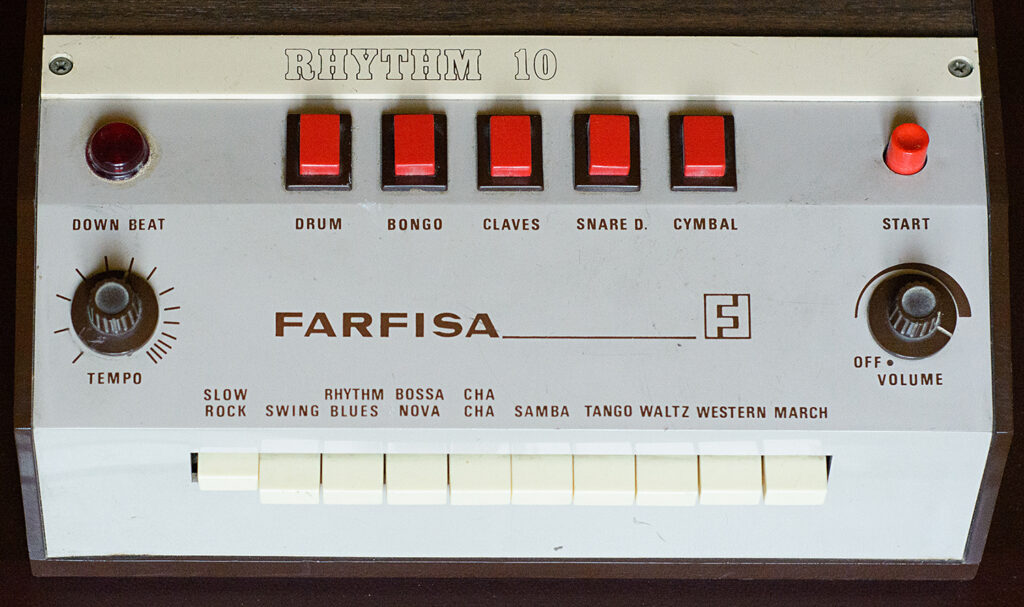
The front panel is divided into 3 sections: the upper part provides an led marking the downbeat, 5 buttons to play different percussion sounds (namely: Drum, Bongo, Claves, Snare D., and Cymbal), and a start switch that starts or stops the internal sequencer.
The middle part has 2 continuous potentiometers: one for the tempo and one for the volume (the latter also turns the device on or off). The tempo can be set continuously from about 50 BPM to about 360 BPM. The sixth mark corresponds to about 90 BPM, which is the tempo I used to sample the built-in patterns. Interestingly, turning the volume above one-half of the available range provides an audible saturation, especially on the Drum sound (i.e. a kick sound); I suspect the amount of saturation is highly dependent on the age of this device…
The lower part lets the musician select which of the 10 built-in patterns should be played by the internal sequencer.
The drum sounds are invariant with respect to tempo and selected pattern, except for button no. 5, marked as Cymbals, which for some patterns plays something similar to a closed hi-hat, while for others it plays an open hi-hat.
The patterns have different metrics: some are 4/4 while others are 3/4. They also feature some “velocity”, but unfortunately this feature is exclusive of the built-in sequences since the buttons are not velocity-sensitive.
Slow rock: 3/4, short cymbal;
Swing: 3/4, long cymbal;
Rhythm blues: 4/4, short cymbal;
Bossa nova: 4/4, short cymbal;
Cha cha: 4/4, short cymbal;
Samba: 4/4, short cymbal;
Tango: 4/4, short cymbal;
Watz: 3/4, long cymbal;
Western: 3/4, short cymbal;
March: 4/4, long cymbal.
Sampling specifications
The device has been sampled in 2 separate recording campaigns: one at a sampling frequency of 44100 Hz and one at 192000 Hz, both at 24 bits, both by feeding the signal directly into the line input of the audio interface, without additional amplification. The first campaign is meant to produce samples usable by most digital hardware drum machines, while the second is meant to produce files for software samplers.
In both campaigns, the 10 patterns have been sampled at approximately 90 BPM, with a gain level which did not end up in hardware saturation (see previous section). Moreover, also an internal noise sample has been recorded.
In the 44100 campaign single drum sounds have been sampled with two different gain settings, one without saturation (marked as L) and one with an interesting amount of saturation (H). On the other hand, in the 192000 campaign single drum sounds have been sampled with three different gain settings: very quiet (marked as L1), with a little bit more punch (L2), and with an interesting amount of saturation (L3). In the 192000 campaign also a pattern with the slowest possible tempo, and one with the fastest possible tempo, have been recorded.
Pattern recordings have been cut so as to produce seamless loops, while single drum sounds have been cut with no pre-roll but with a bit of silence at the end so that you can cut and fade them at your wish (the noise floor is so low you can also leave them as they are).
No further processing was applied.
Pattern recordings have been examined in order to produce a MIDI version of them, with the following note mappings (also velocity has been curated):
- C1: Drum
- C#1: Bongo
- D1: Claves
- D#1: Snare D.
- G1: Cymbal short
- G#1: Cymbal long
Packing
The results of the sampling campaigns have been packed in different ways, all available at the bottom of this page.
Raw samples
This package contains all WAV and MIDI files coming from the 44100 and 192000 recording sessions. Use this package if you want to create your own virtual version of Farfisa Rhythm 10, or if you plan to load some vintage drum machine samples on a hardware sampler.
Recycle REX files
If you’re only interested in the audio loops, this is probably the best format for you. This package contains 10 RX2 files consisting of the 10 patterns of Farfisa Rhythm 10 sampled at 24-bit – 192 kHz. These files should be loadable by all the most famous DAWs, which will take them to the appropriate BPM seamlessly.
GrooveAgent kit
This package contains a Steinberg GrooveAgentSE kit (which is how I use my Rhythm 10 samples when I work in Cubase). The instrument section contains the 6 sounds at 192kHz marked as L2 (i.e. the punchy ones), while the pattern section contains all MIDI loops from the original patterns of Farfisa Rhythm 10.
Reason Refill
This is a Propellerheads Reason Refill file containing a Redrum kit, an NN-XT preset, MIDI files, WAV files, REX files (the same as above), and 2 reason songs (one in the Reason 5 format and one in the Reason Intro 11 format) from which you can copy 10 Redrum patterns (Slots A1-8 and Slots B1-2). Again, the samples used in the presets are those 24-bit 192kHz wav files marked as L2, but the Refill also contains L1 and L3 files in case you want to switch between different levels of saturation.
Ableton Live Pack
This Pack contains the 6 sounds at 192kHz marked as L2 (i.e. the punchy ones), the audio loops, and the MIDI version of the same loops, together with a Drum Rack set to correctly play the aforementioned files. There is also an empty song with all the material pre-loaded into it.
Kontakt
This is a very simple Kontakt instrument that plays the 24-bit 192 kHz L2 samples according to the MIDI mapping depicted in the previous section. Midi files are also included in the package.
Download
All Signal Perspective software is donationware, please buy me a slice of pizza if you find this useful! 🍕
